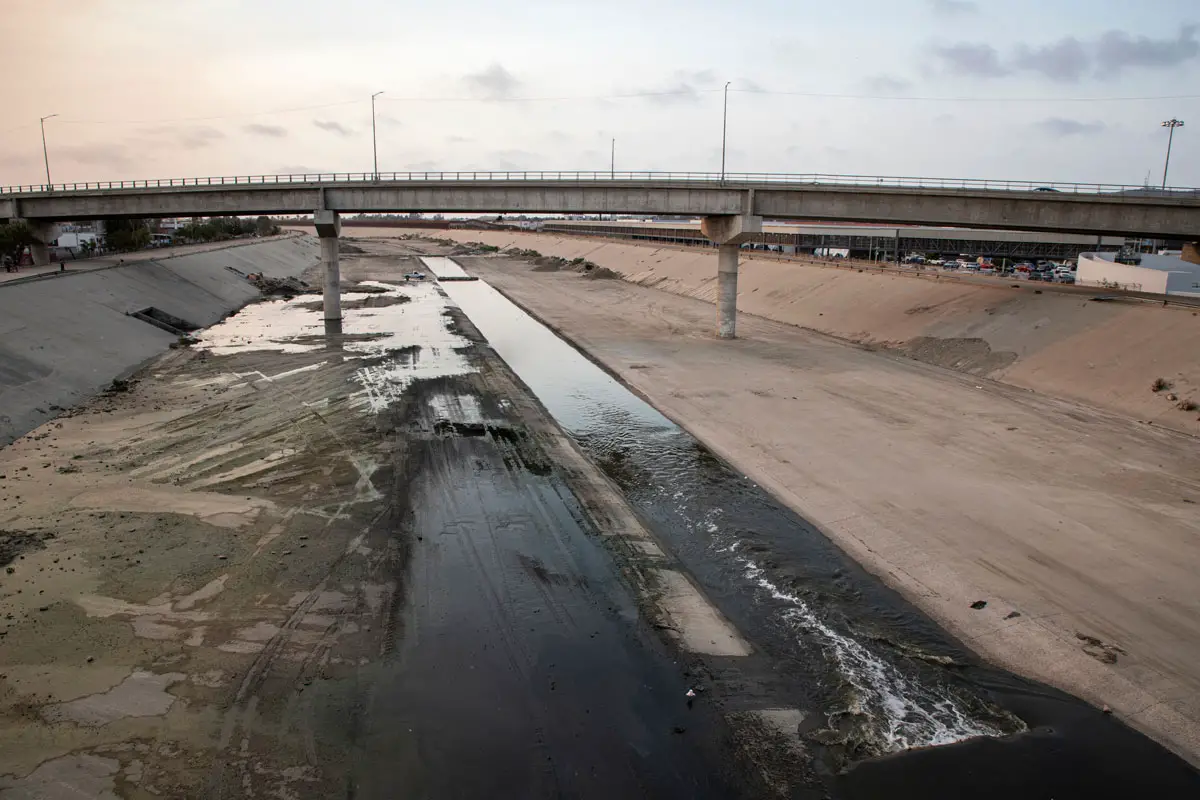ENCINITAS — An Encinitas-based environmental group has threatened legal action over a treatment facility’s discharge of millions of gallons of untreated sewage each day into the water along California’s southern border.
The Coastal Environmental Rights Foundation and San Diego Coastkeeper issued a notice of intent on Dec. 28 to the International Boundary and Water Commission, alleging “hundreds of violations” of federal law at the agency’s South Bay International Wastewater Treatment Plant, located in the Tijuana River Watershed on the border between the U.S. and Mexico.
Most of the watershed, consisting of the Tijuana River that empties into the Tijuana River Estuary, is located in Mexico, with a smaller portion (roughly 25-30%) in Southern California.
According to the notice, IBWC stands accused of allowing the South Bay treatment plant to discharge millions of gallons of untreated sewage, toxic chemicals and garbage, causing severe environmental degradation in the Tijuana River Watershed and Pacific Ocean “at various San Diego beaches near the mouth of the Tijuana River.”
“There have been over 700 consecutive days of beach closures in and around Imperial Beach since the beginning of 2022 to today,” the notice reads.
The resulting closure of public beaches, reports of infections among beachgoers and economic impacts have prompted environmental groups to seek help from the courts.

“If you go to the beach anywhere from Coronado south, it’s polluted virtually every day of the year,” said Marco Gonzalez, CERF’s executive director. “Our goal is to eliminate that condition.”
The legal notice details the IBWC’s alleged failures to comply with discharge prohibitions, chronic violations of water quality objectives, and lapses in submitting mandatory self-monitoring reports. The IBWC faces a federal lawsuit if the alleged violations are not rectified within 60 days, or Feb. 26.
“The USIBWC is confident the plan we have outlined to repair, rehabilitate and expand the South Bay plant is a major step forward as we work with our partners and stakeholders to improve the health and welfare of communities on both sides of the border,” said Frank Fisher, the IBWC’s chief of public affairs. “We are also providing regular updates to the public on our progress.”
Sewage discharge along the U.S.-Mexico border dates back several decades, with the first documented instances surfacing in the early 20th century. The issue gained substantial attention and scrutiny in the late 1980s due to environmental crises.
In 1990, a significant spill released millions of gallons of thick black liquid, untreated sewage, into the Tijuana River. The 1997 El Niño weather phenomenon exacerbated the sewage spills, leading to prolonged beach closures, health advisories and environmental damage.
Since these early crises, the region has grappled with recurrent sewage discharges, often from malfunctioning infrastructure, inadequate treatment facilities and the aging sewage system on both sides of the border.
In 2022, environmental advocacy groups filed a lawsuit against the IBWC over pollution of the Tijuana Estuary and Pacific Ocean, resulting in the Environmental Protection Agency allocating roughly $300 million to upgrade and expand the South Bay International Wastewater Treatment Plant near San Ysidro.
Despite this settlement, the sewage treatment facility requires more than $150 million in immediate repairs and potentially over $1 billion for future expansion to address the sewage issue fully, according to subsequent assessments.
Over the years, despite occasional legal actions, settlements, and funding initiatives to address the sewage crisis, the issue has remained far from resolved.
“What we want is a solution, and that could mean an entirely new treatment plant or an expansion of the existing plant,” Gonzalez said. “Whatever it is, a solution is going to cost tens, if not hundreds, of millions of dollars and will take many years to implement. I expect that if we’re going to reach an agreement out of court, it’s probably going to take us many, many months to negotiate and figure out. Otherwise, we’re going to litigate, which will probably take a couple of years to reach a resolution.”




